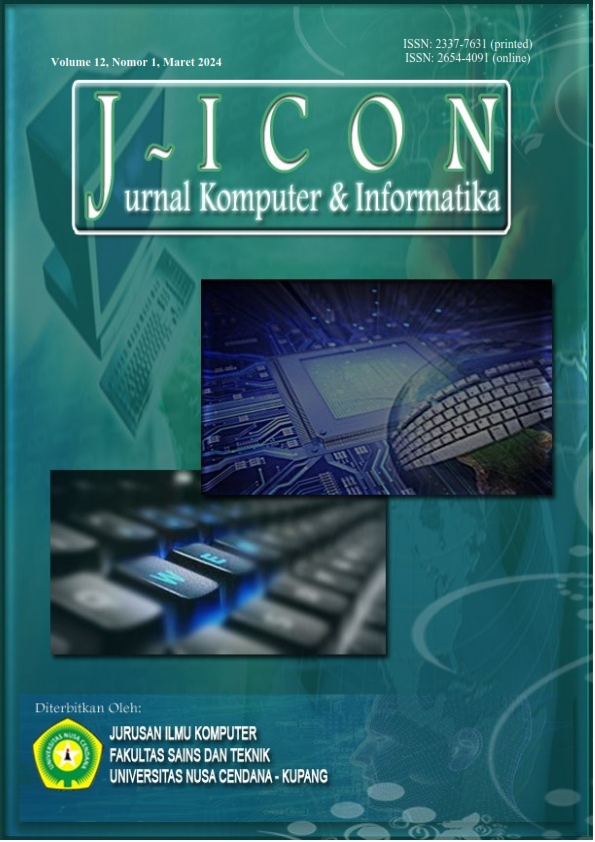Analysis Of Interest in The Paylater Feature in the Shopee Application using the UTAUT 2 Method Among Teenagers
Abstract
Technological development is something that cannot be avoided, technology is used to live everyday life starting from studying, communicating, working and shopping. The technology that is currently developing in Indonesia is Financial Technology (Fintech), therefore currently there are many payment options ranging from using paper money to electronic payments. One of the fintech currently developing in Indonesia is paylater, which is a service similar to an online loan without a credit card that can allow consumers to make payments in one go or in installments. The development of E-commerce is currently increasingly rapid, bringing major changes to teenagers' lifestyles, this has an impact on users when checking out payment transactions, including other costs that are not transparent and the process of paying off bills is difficult before waiting for the payment due date each month. The aim of this research is to find out how interested the use of paylater is among teenagers, by adopting the Unified Theory of Acceptance and Use of Technology (UTAUT2) model. The research method used is a quantitative method using a survey method via an online questionnaire involving a total of 65 respondents. This research uses a Likert scale approach and sampling uses the Slovin formula calculation method. The data obtained was analyzed using the Partial Least Square (PLS) method using SmartPLS software. The results of the tests carried out indicate that the variable perceived trust in the UTAUT2 partially has a positive and significant effect on the decision to use paylater by teenagers. Then the hypotheses that were rejected were the Hedonic Motivation, Habit, and Price Value on the UTAUT2 variables.
Downloads
References
A. Afandi, D. P. Sari, A. Fadhillah, N. Farizal, and M. Arif, “Faktor Penentu Niat Menggunakan Paylater Dengan Kepercayaan Sebagai Variabel Moderasi,” Kunuz, vol. 2, no. 2, pp. 147–163, 2022, doi: 10.30984/kunuz.v2i2.420.
A. I. Farizqi, A. Soleh, and M. R. Febliansa, “Factors Influencing Interest in Shopee Pay Later Users in Bengkulu,” J. Indones. Manag., vol. 3, no. 1, pp. 57–68, 2023, doi: 10.53697/jim.v3i1.1145.
O. A. Awdes, Firman Surya, and Zahara, “Faktor-Faktor Yang Memengaruhi Perilaku Penggunaan Fitur PayLater pada Aplikasi Shopee (SPayLater) Dengan Model UTAUT2”, AISTA Journal, vol. 1, no. 2, pp. 104–111, Dec. 2022, doi: 10.30630/aista.v1i2.13.
N. H. Nasution and M. Munir, “Analisis Faktor-Faktor yang Mempengaruhi Minat Menggunakan Paylater dengan Religiusitas Sebagai Variabel Moderasi”, ab, vol. 19, no. 1, pp. 106–121, Jun. 2023.[Online]. Available: https://journal.iaingorontalo.ac.id/index.php/ab/article/view/3493.
R. Reddyson, F. Franky, L. Leonardy, H. Yeng, and V. Leonardo, “Pengaruh Fitur Paylater terhadap Sifat Belanja yang Konsumtif pada Remaja di Kota Batam,” Ecodemica, vol. 6, no. 2, pp. 261–268, 2022, doi: 10.31294/eco.v6i2.13092.
M. Stevan, M. Zidan, M. A. Faneri, and F. A. Nofirda, “Analisis Pengaruh Penggunaan Sistem Paylater pada Aplikasi Shopee”, jptam, vol. 8, no. 1, pp. 1970–1974, Jan. 2024.[Online]. Available: https://www.jptam.org/index.php/jptam/article/view/12693.
M. B. M. Zigari, A. J. Malik, V. M. Fadla, H. Sulaikah, and W. A. Safitri, “Analisis Faktor-Faktor Yang Mempengaruhi Keputusan Pembelian Menggunakan Paylater Pada Mahasiswa Di Kota Makassar,” Jimbi, vol. 4, no. 2, pp. 171–182, 2023. [Online]. Available: https://www. jurnalmahasiswa.uma.ac.id/index.php/jimbi/article/view/1727.
A. Wibisono, R. A. Destryana, and A. Ghufrony, “Pelatihan Partial Least Square (PLS) Bagi Mahasiswa,” J. ABDIRAJA, vol. 4, no. 2, pp. 24–30, 2021, doi: 10.24929/adr.v4i2.1542.
D. Riswandi, “Transaksi On-Line (E-Commerce) : Peluang dan Tantangan Dalam Perspektif Ekonomi Islam”, econetica, vol. 1, no. 1, pp. 1-13, 2019. [Online]. Available: https://unu-ntb.e-journal.id/econetica/article/view/80.
P. Rahima and I. Cahyadi, “Pengaruh Fitur Shopee Paylater terhadap Perilaku Konsumtif Mahasiswa Universitas Mataram,” Target, vol. 4, no. 1, pp. 39–50, 2022, doi: 10.30812/target.v4i1.2016.
Copyright (c) 2024 Fintri Indriyani, Alfadh Saifullah Agam

This work is licensed under a Creative Commons Attribution 4.0 International License.
The author submitting the manuscript must understand and agree that if accepted for publication, authors retain copyright and grant the journal right of first publication with the work simultaneously licensed under a Creative Commons Attribution (CC-BY) 4.0 License that allows others to share the work with an acknowledgment of the work’s authorship and initial publication in this journal.
 Fintri Indriyani(1*)
Fintri Indriyani(1*)




